I love our cat. I rescued her 6 years ago… I don’t love litter boxes. I don’t like the idea of them in the house or the litter in the air. It’s just always been a thing for me. In our last house, we had a random nook in my office and Jeff created a litter box cove with a locked door so the babies couldn’t get into it.
When we moved into our current house there was nowhere to put the darn litterbox. It moved from the guest room to the hallway to our room and back around again.
I decided to try out an idea with a base cabinet in the garage and it’s working amazingly.

What is a Kitty Litter Cabinet?
Super duper simple. We secured a base cabinet in the garage (you could do this inside the house or in a closet as well) and put a cat door through the wall connecting the hallway to the cabinet.
There are a few details not to skip when doing this. Read out the steps below.
Tools Needed to Make a Kitty Litter Cabinet
36” Base Cabinet | Weather Stripping | Pet Door | Magnetic Locks | Butcher Block Counter | Drill | Jigsaw | Stud Finder | Level | Wipe-On Poly
How To Make Your Own Kitty Litter Box Cabinet:
Short and sweet 4 Step Guide to getting that litter box out of your way!
Step 1: Secure the Base!
Measure your litter box and purchase the base cabinet of your choice. We went with the ready-made 36” base cabinet, but you can choose from many options. Make sure if it comes with the countertop there isn’t a large lip. You want the side of the cabinet to kiss right up to the wall. Our garage oddly had base trim; we removed it where the cabinet was going to get a tighter seal.
Using a stud finder and a drill, secure your base cabinet in place next to an interior wall. Mark the studs past the base cabinet so you can see them for the cat door installation. Make sure you are away from where the studs are on the interior side of the wall. Your kitty door will be going between the 2 studs on the side of the cabinet.
We chose a base cabinet from Lowe’s that included a functioning drawer for the scooper and kitty litter bags. Add a few coats of wipe-on poly to the cabinet to protect it from the elements.
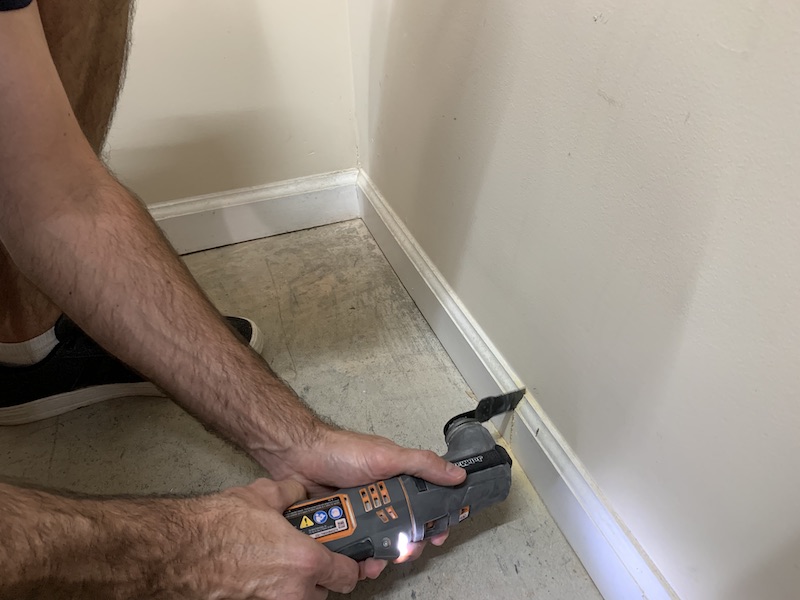

Step 2: Add the Counter
We choose Butcher Block creating more usable work space in the garage workshop.
Cut the Butcher Block to size and secure to the base cabinet and the wall using L shape brackets. Coat with wipe on poly as desired.
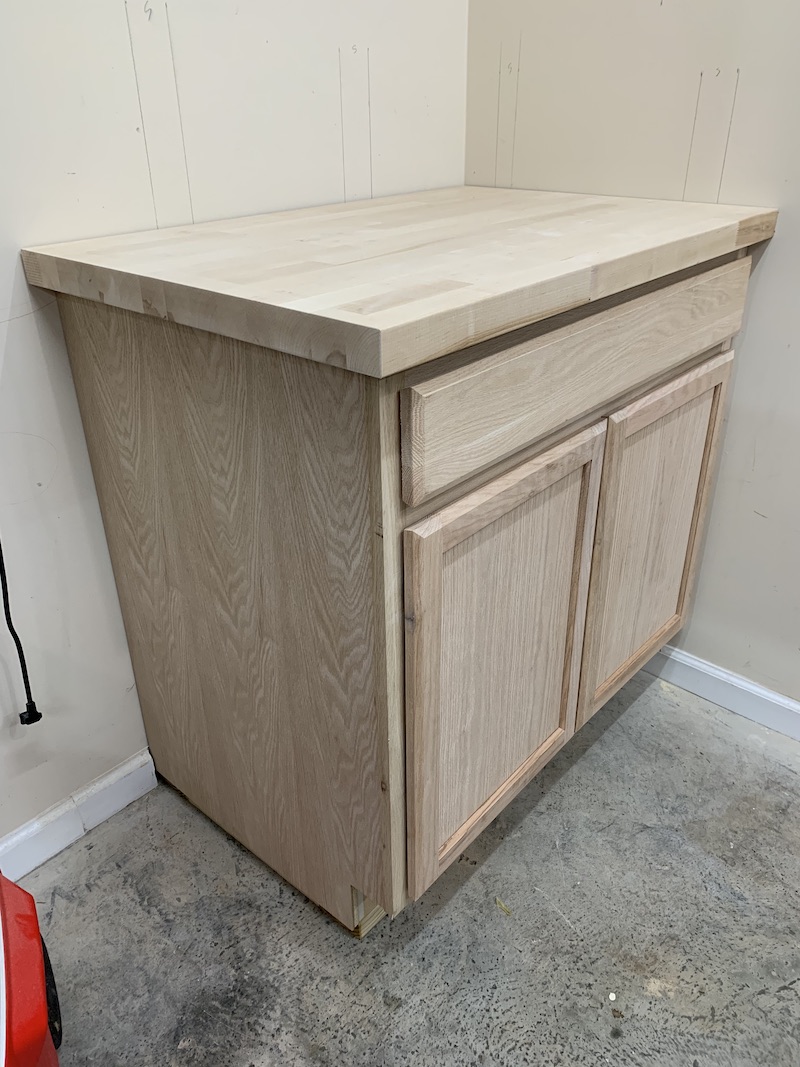
Step 3: Install the Kitty Door
**Placing the kitty door above the molding keeps all the kitty litter inside the cabinet. We have a mat lining our kitty cabinet and pull it out to shake it off into the garage regularly.
Using your stud lines, place the template for the kitty door in between two studs on the narrow side of the cabinet. Get the paper template level and tape in place with painters tape. The kitty door will come with installation instructions; use those to continue this step.
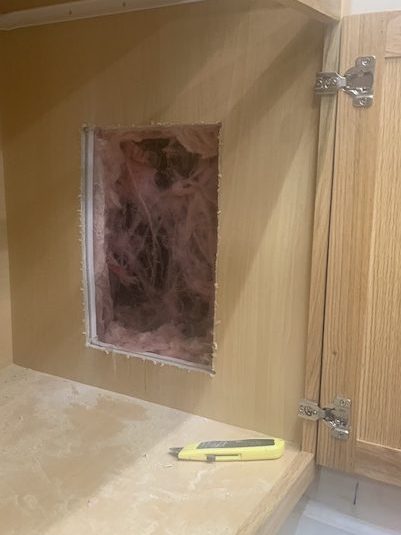

Step 4: Secure and Seal the Doors
Our base cabinet had a little gap between the cabinet doors. We staple gunned a thin piece of wood to the back of one cabinet door, creating a seal. You can use wood glue, nails, or screws to secure the strip. But we didn’t want gaps for bug purposes.
In addition to the wood strip, we used simple peel and stick weather stripping on the drawer and doors. Again decreasing any chances of bugs getting in from the garage to her litter.
Lastly, we added magnetic kid proofing locks to the cabinet doors. Cora is an inside only cat, and I didn’t want her pushing the doors open. Or our kids just randomly opening the cabinet doors.
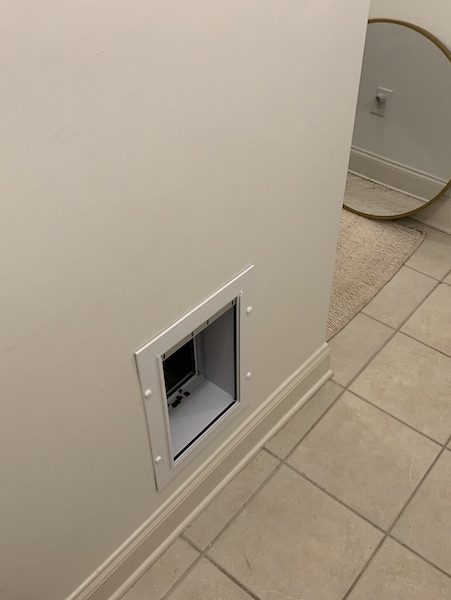
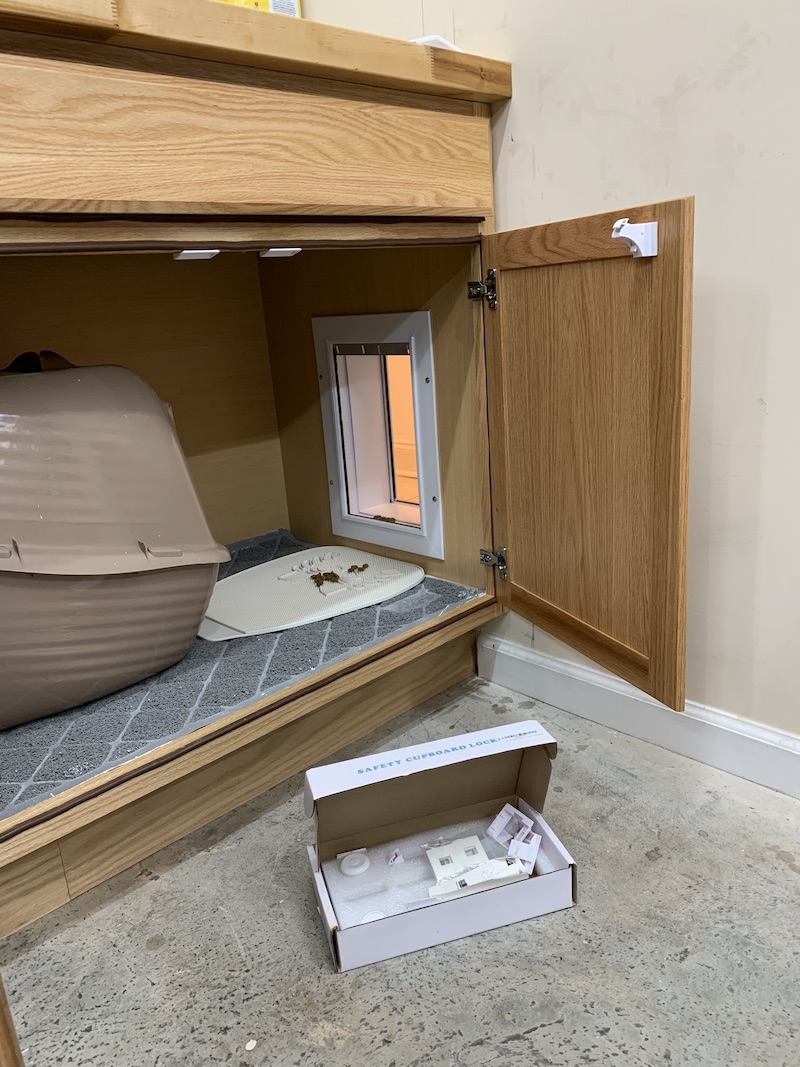
The Final Reveal
This was possibly the easiest project we have ever done.
We started without the door flap so it was easier for her to investigate and used treats to introduce her to her new personal bathroom. She is a happy camper and so am I.
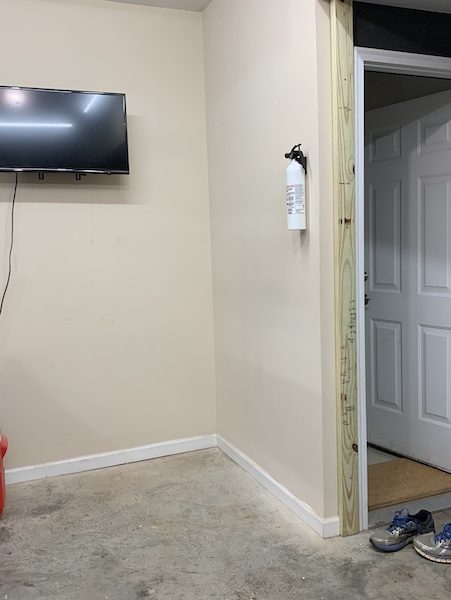
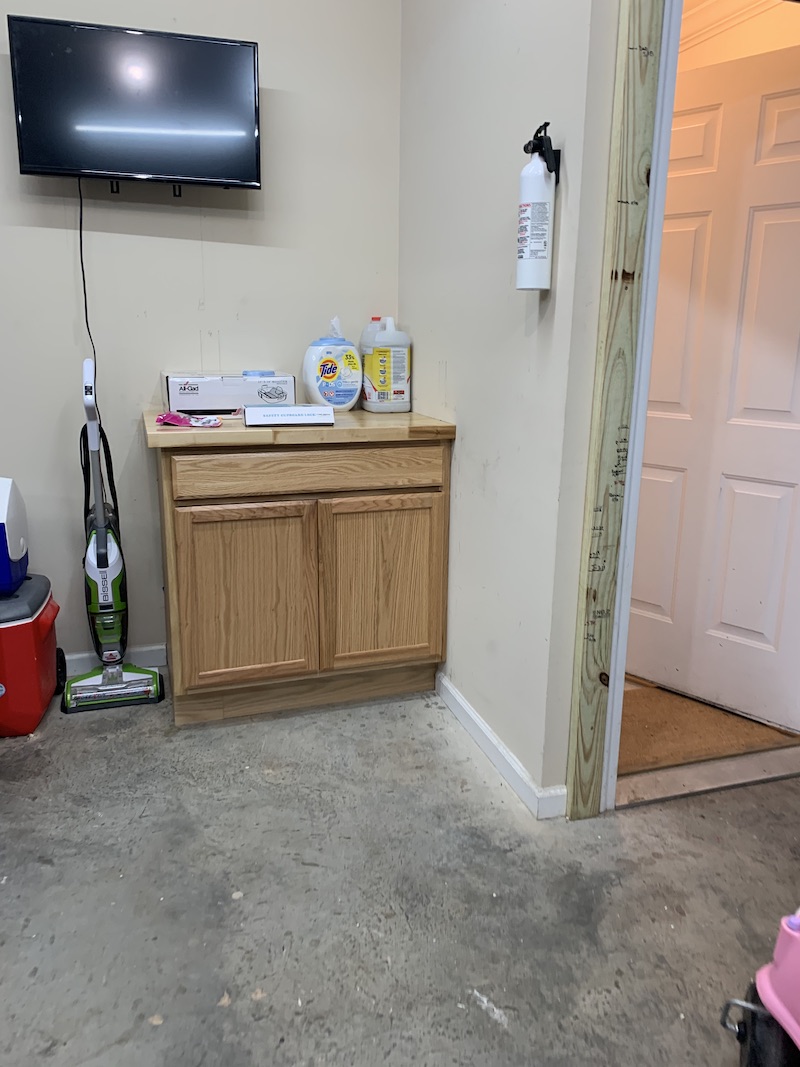
If DIY’s Aren’t Your Thing
Some online retailers have bench kitty litter benches. I have linked a few below for my non-DIY friends.




